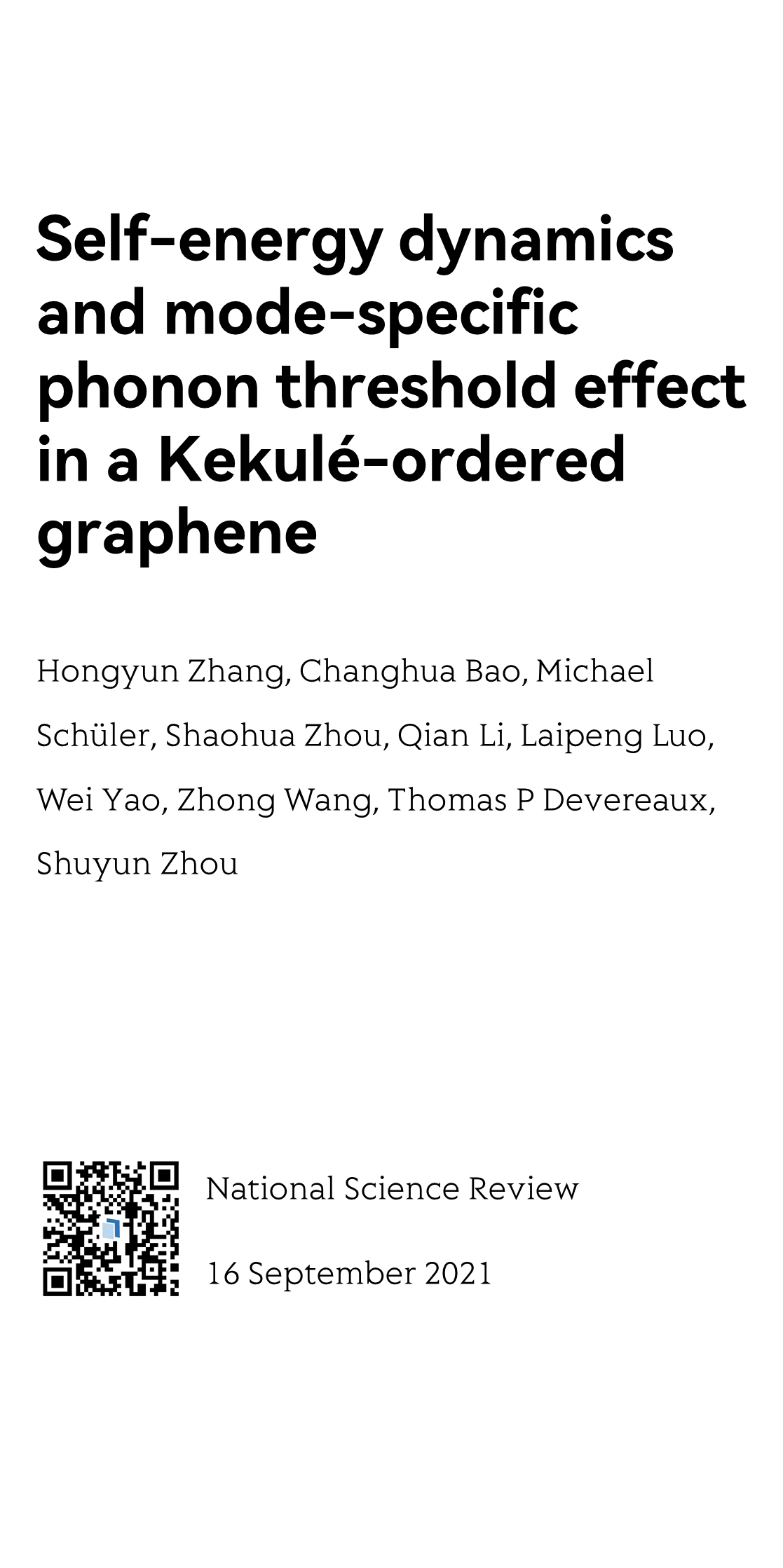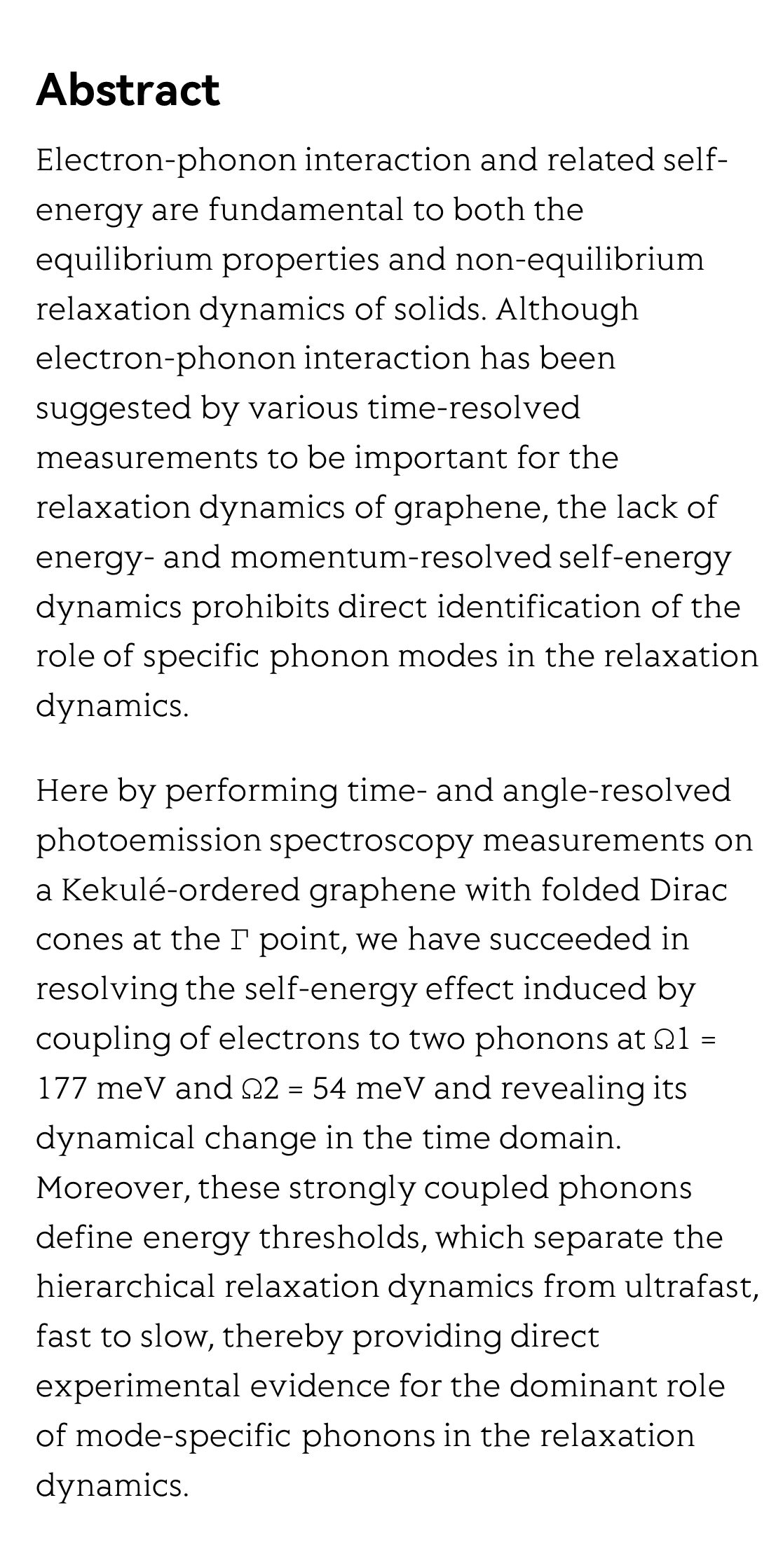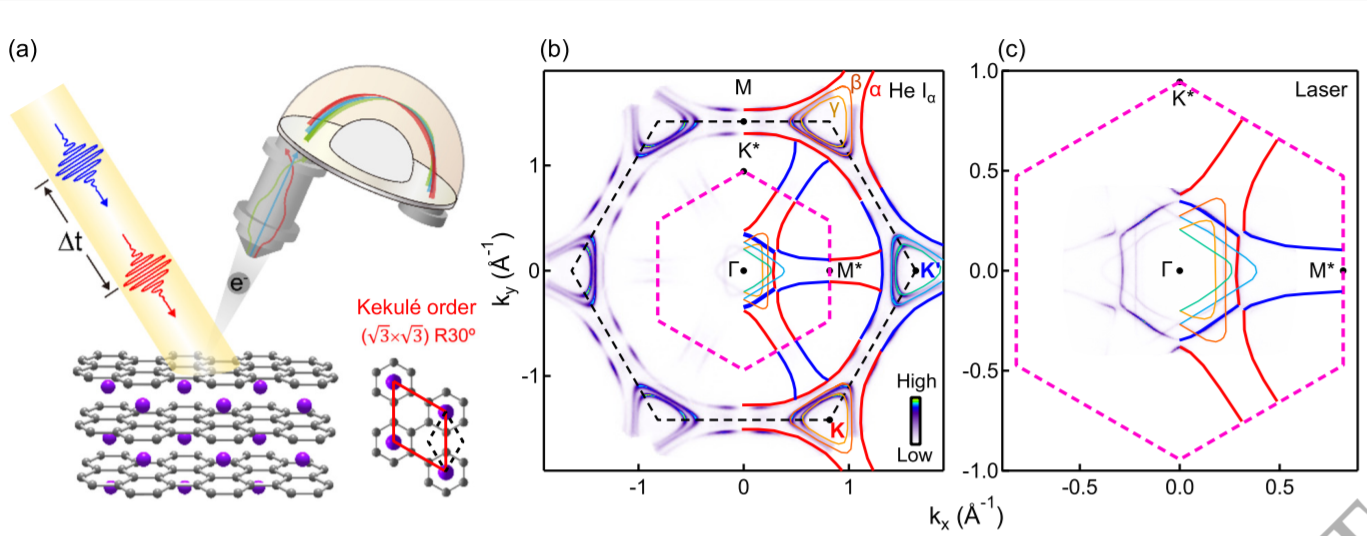(Peer-Reviewed) Self-energy dynamics and mode-specific phonon threshold effect in a Kekulé-ordered graphene
Hongyun Zhang 张红云 ¹, Changhua Bao 鲍昌华 ¹, Michael Schüler ², Shaohua Zhou 周绍华 ¹, Qian Li 李骞 ¹, Laipeng Luo 罗来鹏 ¹, Wei Yao 姚维 ¹, Zhong Wang ³, Thomas P Devereaux ² ⁴, Shuyun Zhou 周树云 ¹ ⁵
¹ State Key Laboratory of Low Dimensional Quantum Physics and Department of Physics, Tsinghua University, Beijing 100084, P.R. China
中国 北京 清华大学物理系 低维量子物理国家重点实验室
² Stanford Institute for Materials and Energy Sciences (SIMES), SLAC National Accelerator Laboratory, Menlo Park, California 94025, USA
³ Institute for Advanced Study, Tsinghua University, Beijing, 100084, P. R. China
中国 北京 清华大学高等研究院
⁴ Department of Materials Science and Engineering, Stanford University, Stanford, CA 94035, USA
⁵ Frontier Science Center for Quantum Information, Beijing 100084, P. R. China
中国 北京 清华大学量子信息前沿科学中心
National Science Review, 2021-09-16
Abstract
Electron-phonon interaction and related self-energy are fundamental to both the equilibrium properties and non-equilibrium relaxation dynamics of solids. Although electron-phonon interaction has been suggested by various time-resolved measurements to be important for the relaxation dynamics of graphene, the lack of energy- and momentum-resolved self-energy dynamics prohibits direct identification of the role of specific phonon modes in the relaxation dynamics.
Here by performing time- and angle-resolved photoemission spectroscopy measurements on a Kekulé-ordered graphene with folded Dirac cones at the Γ point, we have succeeded in resolving the self-energy effect induced by coupling of electrons to two phonons at Ω1 = 177 meV and Ω2 = 54 meV and revealing its dynamical change in the time domain. Moreover, these strongly coupled phonons define energy thresholds, which separate the hierarchical relaxation dynamics from ultrafast, fast to slow, thereby providing direct experimental evidence for the dominant role of mode-specific phonons in the relaxation dynamics.
Flicker minimization in power-saving displays enabled by measurement of difference in flexoelectric coefficients and displacement-current in positive dielectric anisotropy liquid crystals
Junho Jung, HaYoung Jung, GyuRi Choi, HanByeol Park, Sun-Mi Park, Ki-Sun Kwon, Heui-Seok Jin, Dong-Jin Lee, Hoon Jeong, JeongKi Park, Byeong Koo Kim, Seung Hee Lee, MinSu Kim
Opto-Electronic Advances
2025-09-25
Dual-frequency angular-multiplexed fringe projection profilometry with deep learning: breaking hardware limits for ultra-high-speed 3D imaging
Wenwu Chen, Yifan Liu, Shijie Feng, Wei Yin, Jiaming Qian, Yixuan Li, Hang Zhang, Maciej Trusiak, Malgorzata Kujawinska, Qian Chen, Chao Zuo
Opto-Electronic Advances
2025-09-25





